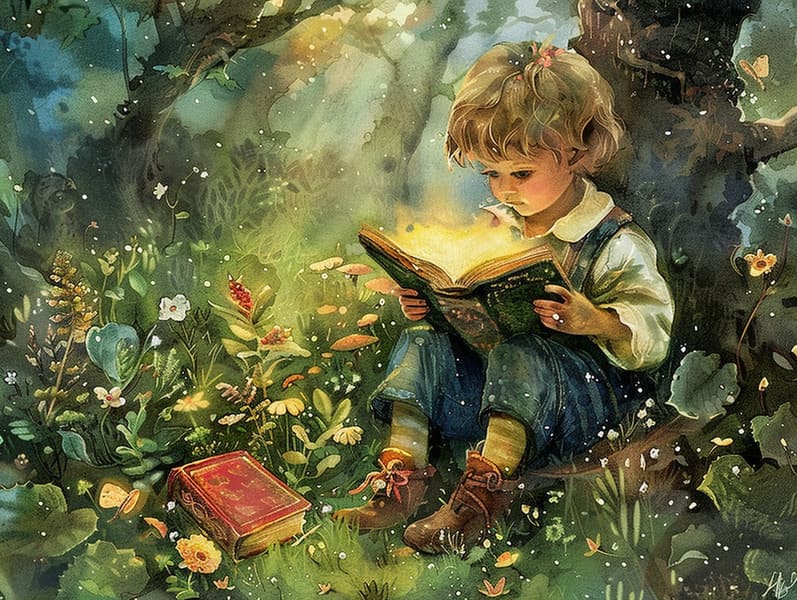The Start of Traditional Fairy Tales and Their Ageless Delight.
The Start of Traditional Fairy Tales and Their Ageless Delight.
Blog Article

Popular fairy tales have legendary status. These narratives have been conveyed from one generation to the next centuries before they were ever inscribed. They came from a variety of civilizations, including Western traditions. They were initially passed along among grown-ups, often carrying themes and messages related to the societal norms and beliefs of the time.
The renowned Brothers Grimm, Jacob and Wilhelm, were among the first to compile and publish many of these beloved fairy tales. Their anthology, "Grimm's Folk Tales," included classics like "Cinder Maid," "The Bread Crumb Trail," and "Snow White," which have since become mainstays in the world of beloved fairy tales. Similarly, Hans Christian Andersen's charming stories, such as "The Mermaid's Tale," and "The Story of the Ugly Duckling," have gained the love worldwide, guaranteeing their place in the pantheon of beloved fairy tales.
Even though they are old, classic fairy tales remain as meaningful as ever, especially as bedtime stories for kids. These fantastical tales are now available in different formats, including colorful picture books, enchanting animations, and online fairy tales.
Their lasting presence can be connected to several delightful features:
Important Morals: Traditional fairy tales often offer important moral lessons. Narratives like "The Wolf and the Liar" teach the value of sincerity, while "The Tortoise and the Hare" demonstrate the benefits of perseverance and modesty. These narratives offer little ones clear distinctions between virtue and vice, forming their moral compass in a soft yet deep way.
Empathy and Understanding: Classic fairy tales frequently include characters facing struggles and tests, provoking children to identify with their struggles and support their triumphs. For instance, "Beauty and the Beast" points out the benefit of looking past the exterior to understand the inner spirit of a character, enhancing perception and insight.
Cultural Appreciation: Many ancient fairy tales are deeply ingrained in the cultural contexts from which they were born. Exploring these narratives can provide delightful insights into different ways of life, building a sense of cultural insight and respect.
Imagination and Innovation: The supernatural elements in timeless fairy tales—magical spells—enliven children’s fantasies. These narratives transport readers to magical realms, fostering innovative ideas and a sense of mystery that remains a lifetime.
Old fairy tales are not only alluring but also teaching. They serve as charming tools in promoting various cognitive and affective skills in the young. When traditional fairy tales are voiced, they boost communication skills by teaching new terms and meanings and sophisticated sentence structures. This practice also strengthens hearing perception and mindfulness, as children track the narrative, expectant to see what happens next.
Furthermore, contemplating the themes and characters of timeless fairy tales can enhance cognitive skills and thought processes. Little ones are guided to discover patterns, forecast, and comprehend cause and effect. These debates also help young readers communicate their thoughts and feelings, cultivating their emotional intelligence.
In today’s technological era, the abundance of online storybooks has made these stories more accessible than ever. Websites and apps supply large libraries of traditional fairy tales that can be read or heard anytime, anywhere. Fairy tales spoken are particularly widespread, extending an engaging way for the young to delight in these mesmerizing stories. Audio stories and voiced videos take characters and settings to life, often supported by enchanting melodies and music that augment the storytelling journey.
The everlasting appeal of traditional fairy tales lies in their ability to alter to present days while keeping hold of their central messages. Contemporary modernizations of these narratives often feature more multicultural protagonists and modern settings, making them meaningful to today’s audience. However, the basic principles of bravery, kindheartedness, and even-handedness remain unchanged, continuing to move audiences of all ages.
Ancient fairy tales also offer a sense of warmth and homeliness. They share a structured narrative with a apparent beginning, middle, and end, often drawing to a close with the resolution of conflicts and the triumph of goodness over badness. This steadiness can be encouraging for kids, granting a sense of sturdiness in an unstable world.
Ancient fairy tales continue to fascinate and inform new generations, maintaining their mystique and pertinence in modern society. As kids' bedtime tales, they grant access to a perfect blend of charm and understanding, encouraging moral values, empathy, and creativity. The prevalence of internet fairy tales and the in demand status of fairy tales spoken certify that these classic tales remain obtainable to new generations.
By protecting and disseminating these stories, we continue to appreciate the rich tapestry of human imagination and cultural heritage. Whether you are exploring a vividly illustrated book, perusing a web-based collection, or listening on an audio story, the attraction of classic fairy tales is always within reach. These tales this site emphasize of the unwavering effect of fairy tales and its ability to bind us across eras and regions.
Even if you are seeing a richly illustrated book, delving into a virtual library, or listening on an voice book, the attraction of timeless fairy tales is always within reach.
These fairy tales reveal of the consistent spell of tales and its ability to join us across centuries and lands, forging a link that captivates and teaches alike.